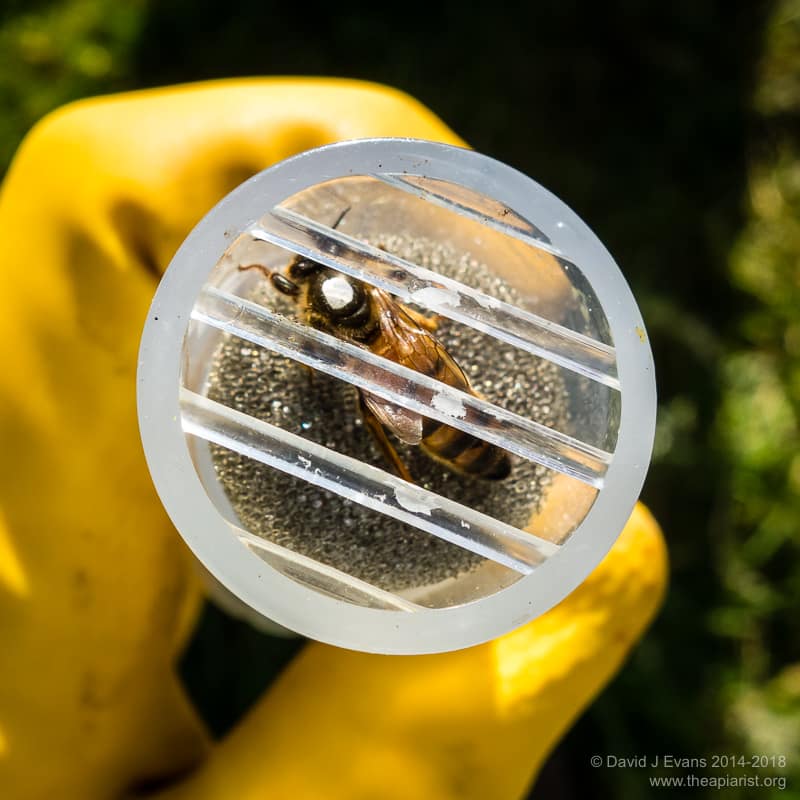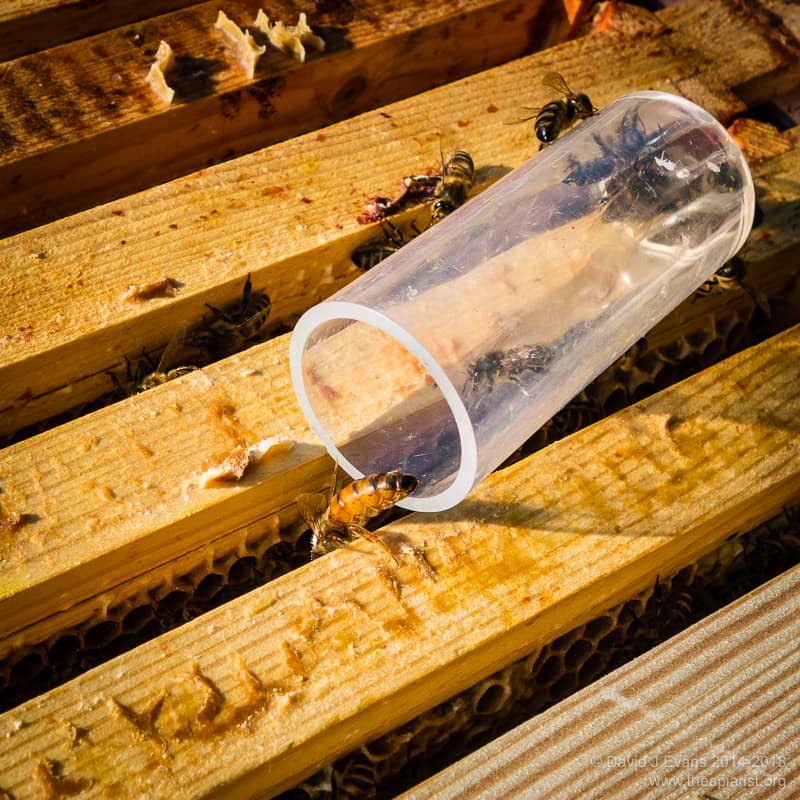The queen returns
Queen mating has been a bit hit and miss for me this year so I was pleased to find a number of mated, laying queens in 5 frame nucs when I checked yesterday evening. The nucs were arranged using a circle split and a couple of queens had clearly failed to return from mating flights (that’s a guess … she had definitely emerged from the cell). These boxes were depleted of bees and the remaining stores were being robbed out. I moved these nucs aside and shook the remaining bees out.

Circle split …

Marked queen …
I’d forgotten my scissors but did find a marking cage and pen in my beesuit, so carefully started queen marking each mated, laying queen. Inevitably when rushed (I’d just got off a delayed flight from Scotland and was running out of evening) I managed to drop one of the queens as I tried to manipulate her into the marking cage. They can fly, just not well and not far … she did a sort of lazy spiral and was easy to spot because of her size. However, I lost sight of her against the low evening sun in the mass of returning foragers. Oops. I stepped carefully outside the circle of nucs – they usually crash to earth nearby – and tidied up the rest of my gear. It would add injury to insult if I’d managed to stand on her … Finally, on my last look around I spotted her clinging to some grasses near the hive entrance. I caged and marked her, reopened the nuc and allowed her to serenely walk back into the colony.

The queen returns …
With the exception of some vertical splits (to be described later) that’s the last of my queen rearing this season. I’ve got all the nucs I need for my move to Fife. The next task is to build a load of travel screens …
Updates
Both the churchyard swarm and swarm that delivered itself to a bait hive have mated, laying queens. The initial large drop of phoretic mites – more than 150 from the former – shows how valuable prompt treatment with vaporised oxalic acid is. In 2-3 weeks it will be easy to determine the quality of the laying pattern of the queen and the temper of the colony will start to become apparent. At that point a decision will be made to keep them or unite them with another colony.
Join the discussion ...